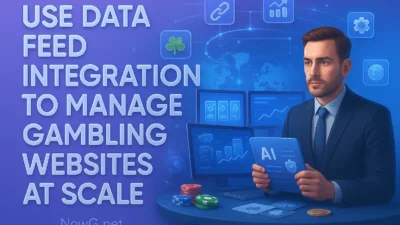Last Updated on November 19, 2025 by Caesar Fikson
Let’s start with the shift that actually matters in 2026: sportsbooks win on orchestration, not hype. It’s the ability to turn legal rules into product toggles, to route payouts instantly, to price in-play without breaking margin, and to prove all of that in logs an auditor can read. Get the spine right and weekends are calm; get it wrong and you’ll spend Saturdays firefighting.
Here’s the blueprint I give founders and operators when they ask how to launch—properly.
Step 1 — Choose your business model before you touch tech
Pick control versus speed. Everything else follows.
| Model | What it is | Time-to-market | Margins | Compliance burden | Control | When to choose |
|---|---|---|---|---|---|---|
| White-label under partner license | Your brand on another operator’s license & stack | 4–12 weeks | Low–mid | Low | Low | MVP, market test, small team |
| Turnkey with your own license | Vendor stack + your license | 4–9 months | Mid | Mid–high | Mid | You want brand equity + ownership |
| Modular/PAM + best-of-breed | API-first core, you select sportsbook, CRM, KYC, PSPs | 6–12 months | Mid–high | High | High | You have product ops and capital |
| Managed Trading Service (MTS) | Vendor prices & manages exposure for you | 2–6 months | Mid | Mid | Mid | Lean team; live trading is scary (it is) |
| Retail-first, digital later | Shops/kiosks now, mobile later | 3–9 months | Mid | Mid | Mid | Regimes that favor retail ZZ permits |
If you’re torn, start lean (white-label or MTS) but demand data exports from day one so migrating later isn’t surgery.
Step 2 — Pick jurisdictions with a scorecard, not a hunch
Regimes differ wildly. Don’t chase vanity markets; chase net margin you can actually keep.
| Factor | Weight | What “good” looks like | Your score (1–5) |
|---|---|---|---|
| License cost & renewal | 10% | Fees you can amortize in 18–24 months | |
| Tax basis (GGR vs NGR) | 15% | Predictable, NGR-friendly, no promo double tax | |
| Certification path | 10% | Clear lab process, no multi-year backlog | |
| Payments & rails | 15% | Local APMs + instant payouts + high card acceptance | |
| RG/Marketing rules | 10% | Toggles > custom code; ads permitted with rules | |
| Market size & ARPU | 15% | Real per-capita spend; calendar fit | |
| Competition density | 10% | Space for a #3–#5 brand | |
| Brand acceptance | 5% | Sports culture trusts new operators | |
| Ops complexity | 10% | Fewer local quirks to maintain |
Score two or three markets; pick one to launch. Expansion is a toggle away only if you design for it now.
Step 3 — Incorporate, bank, and blueprint compliance
To be frank, compliance isn’t a chapter—it’s your runway.
Form the nucleus:
- Regulated entity + board minutes + UBO disclosures.
- Gaming bank accounts (some banks won’t touch gaming; start these conversations early).
- Merchant acquiring + PSP contracts (card, instant bank, wallets, vouchers).
- Data hosting & residency plan (some markets require in-country data).
Create and approve policies (one page each):
- AML/CFT program (KYC tiers, EDD triggers, SAR workflow).
- Responsible gaming framework (limits, time-outs, exclusion).
- Sports integrity & suspicious betting escalation.
- Complaints & ADR/ODR handling.
- Bonus & promotion semantics (math, caps, ledgers).
- Change management & release controls.
- Incident response & breach notification.
Assign named owners. Version everything. Regulators love version history; auditors live for it.
Step 4 — Design the technical architecture (build vs buy with eyes open)
Think of your sportsbook as a bus with slots. You’ll swap engines, not the chassis.
Core components:
- PAM (Player Account Management): identity, wallet, ledger, sessions, limits.
- Sportsbook engine: markets, pricing, acceptance, bet builder, cash-out, settlement.
- Managed Trading Service (optional): pricing + exposure management.
- Odds & data feeds: at least two, with redundancy and reconciliation.
- Payments & payout services: card acquiring, instant bank, wallets, vouchers.
- KYC/AML/Geo: doc capture, liveness, PEP/sanctions, device, geo-fence.
- CRM/CDP: real-time triggers, holdouts, copy libraries by jurisdiction.
- BI & warehouse: raw event streams, snapshots, schema versioning.
- Security stack: WAF/CDN, DDoS, secrets manager, SIEM, EDR.
- Observability: logs, metrics, traces, SLOs, on-call rotations.
Build vs buy sanity table
| Component | Buy | Build | Reality check |
|---|---|---|---|
| PAM | ✔️ | ⛔ | Don’t. You want an audited ledger yesterday. |
| Sportsbook engine | ✔️/🤝 | ⚠️ | Consider MTS to start; insource later per sport. |
| Data feeds | ✔️ | ⛔ | Buy two. Outages happen. |
| Payments router | ✔️/⚙️ | ⚠️ | Buy gateway, build smart routing rules. |
| KYC/AML | ✔️ | ⛔ | Integrate multiple vendors per market. |
| CRM/CDP | ✔️ | ⚠️ | Buy core; build the journeys. |
| BI/Warehouse | ⚙️ | ✔️ | Own your models; never outsource truth. |
Step 5 — Price, trade, and survive live (without losing your shirt)
Live is where you make or lose reputation.
- Latency budgets: aim sub-600 ms market updates for top leagues; cash-out computations must not block bet acceptance.
- Acceptance logic: max exposure by market, player tier limits, bet delay windows, reject reasons that make sense.
- Bet builder/SGP: pre-compute combos; prevent correlated market abuse; publish what’s excluded.
- Cash-out semantics: profit-only vs stake-inclusive; how boosts and bonuses interact.
- Settlement: partials, void rules, stat delays, official data precedence; long-tail result handling (player props determined post-match).
- Outage playbook: if Feed A dies, fall back to Feed B; freeze new markets; comms template to CS & social; risk signs off on reopen.
Exposure guardrails (starter settings)
- Max win per sport & league.
- Player tier limits (novice, regular, VIP) with periodic reviews.
- Hold targets per sport (e.g., 5–8% soccer; 4–6% top US leagues; higher for parlays).
- Red/yellow flags: sharp patterns, correlated parlays, stale lines.
Step 6 — Payments that customers actually trust
Let’s face it, payouts are your brand. If they’re slow, the rest doesn’t matter.
Cashier design priorities:
- Rail order by acceptance and cost, not by habit. Local APMs first.
- Save methods; show live payout ETA.
- Mirror deposit → withdrawal where rules require.
- Handle partial payouts when bonus funds complicate balances.
- Instant payouts where legal (push-to-card, instant bank).
Payment matrix template
| Method | Use case | Acceptance | Payout ETA | Cost (relative) | Notes |
|---|---|---|---|---|---|
| Cards (Visa/MC) | Ubiquitous | Med–High | Hours–Days | $$ | Acceptance varies by issuer |
| Instant bank (A2A) | Trust + fast | High | Seconds–Minutes | $ | KYC tie-ins, strong SCA |
| Wallets (PayPal, etc.) | Habit | High | Hours | $$ | Good for refunds |
| Vouchers/Cash | Cash-preferring geos | Med | N/A | $ | Great for deposits only |
| Crypto (where legal) | Niche | Varies | Minutes | $ | Regulatory complexity |
Reconciliation & risk
- Daily reconciliation by rail; issuer-level acceptance reporting.
- Velocity rules for payouts; dual approval on large withdrawals.
- “What happens next” copy on every error state.
Step 7 — KYC/AML/Geo that doesn’t make users rage-quit
Auto-pass rate target: 70–85% on first attempt in mature markets. You get there by asking for the right docs in the right order.
| Market pattern | First ask | Avoid asking for | UX detail |
|---|---|---|---|
| National ID markets | National ID + DOB | Utility bills upfront | Input masks + checksum |
| Bank-ID markets | Bank login flow | Manual uploads | Fast fallback to manual |
| Address-light | Phone + registry lookup | ZIP + street grids | Examples + landmarks |
| High cash usage | Voucher code + phone | Full card forms | Guide to payout rails |
AML reality
- Sanctions/PEP screening at registration + continuous.
- Affordability triggers (loss velocity, deposit escalations).
- Case management with notes, attachments, and SAR exports.
- Keep “denylist” logic explainable; regulators hate black boxes.
Geo
- Hard blocks at borders; clear error + appeal path.
- Travelers: short-term whitelist with enhanced monitoring.
Step 8 — Product & market coverage that fits your audience
Don’t try to be everything on day one.
- Tier 1 sports: soccer, NFL/NBA/MLB/NHL or your local big-three; get market depth and stability right.
- Tier 2: tennis, MMA, golf, motorsport; props matter.
- Long tail: esports, darts, table tennis—priced carefully; watch integrity feeds.
- Features: SGP, cash-out, early payout promos (with caps), request-a-bet flows.
- Localization: market naming, odds format defaults, calendar-aware lobbies.
Step 9 — Promotions that grow, not leak
Promos move acquisition and early retention. They also burn cash if you don’t govern them.
Bonus semantics (treat these differently in the ledger):
- Free bet = stake not returned, profit only.
- Bet credit = returns profit; credit is not withdrawable; WR applies.
- Odds boost = higher price, exposure controlled, boost cap.
- Profit boost = % uplift on net win, cap per slip.
- Parlay insurance = refund if one leg loses, cap & min odds per leg.
Economics you must track
- Effective Reward Rate (ERR) = rewards_cost / cohort_NGR.
Keep ERR in the 8–12% band outside tentpoles; lower for sharp cohorts. - Breakage = unclaimed bonus value; model it honestly; don’t rely on it.
Promo governance
- Caps by cohort and campaign.
- Abuse controls: device graphs, delayed high-value rewards, KYC gates, mixed-signal missions (not just “deposit, bet, withdraw”).
- Versioned T&Cs with examples; CS relies on these.
Ledger example (auditable)
| Event | Debit | Credit | Balance note |
|---|---|---|---|
| Free bet issued | Bonus liability 10 | – | Liability +10 |
| Bet settled (profit 12) | – | Cash 12 | Stake not returned |
| Bonus liability cleared | Bonus liability 10 | – | Liability −10 |
Step 10 — Responsible gaming: build into the engine
RG isn’t a footer; it’s eligibility logic and product features.
- Tools: deposit/wager/loss limits, session reminders, time-outs, self-exclusion.
- Cool-offs: instant; do not upsell during cooldown.
- Real-time: if RG score triggers, promos pause immediately.
- Comms: write like a human; publish helplines that actually work.
- Quarterly fairness review: streak drop-offs, mission skew, VIP distribution.
Step 11 — Security & reliability (because outages don’t care about launches)
- Certs & controls: ISO-27001 mindset—even if not required, act like it.
- Perimeter: WAF/CDN, DDoS, mTLS where appropriate; key rotation.
- Monitoring: golden signals (latency, traffic, errors, saturation), price staleness, feed divergence.
- DR & backups: tested failover; RTO/RPO defined.
- Change control: release windows; rollback plans; approvals logged.
- Incident: named on-call; comms templates; post-mortems you actually share.
How to Start Your Own Sportsbook in 2026: A Step-by-Step Guide (Part 2 of 2)
We’ve set the spine. Now let’s get you to a launch you won’t regret.
Step 12 — Marketing, acquisition, and the math that pays salaries
Channels that work (if you respect their physics):
- SEO & content: educational pages (odds explained, SGP guides), local team hubs, event landing pages. Slow, compounding.
- Affiliates: cost-per-acquisition with postbacks and fraud scoring; give them compliant creative feeds.
- Paid search/social: strict ad rules; inducement copy toggles by market; app campaigns need MMP compliance.
- Influencers/streamers: contract clear disclosures; track with sub-IDs; focus on live events.
- On-property & OOH (retail markets): QR journeys that convert in under 30 seconds.
Attribution sanity
- Install a single source of truth (BI) and accept that partners need simpler windows (e.g., last-click 7 days). Reconcile; don’t fight physics.
Unit economics (workable template)
| Metric | Target (example) |
|---|---|
| CAC (blended) | $95 |
| 90-day GGR / user | $220 |
| Promo cost (ERR) | 10% of NGR |
| PSP & ops | 3–5% of GGR |
| Tax/licensing | Jurisdiction dependent |
| 180-day LTV / CAC | ≥ 2.5x |
If you can’t calculate LTV-to-CAC by acquisition source, pause spend. You’re buying noise.
Step 13 — Team and org that survive weekends
Minimal viable staffing (Phase 1):
| Role | FTE | Why |
|---|---|---|
| Head of Product / Platform | 1 | Owns toggles, change log, releases |
| Trading lead (with MTS, 24/7 light) | 1 + vendor | Pricing, exposure, incident calls |
| Compliance/RG officer | 1 | Keeps license & sanity |
| Payments analyst | 1 | Acceptance routing, issuer wrangling |
| CRM lead | 1 | Journeys, holdouts, tone libraries |
| Data engineer/BI | 1 | Pipelines, models, dashboards |
| CS manager + agents | 1 + 6–10 | 24/7 coverage in language |
| DevOps/SRE (shared/vendor) | 1 | SLOs, incidents, deploys |
Phase 2 (post-launch): add VIP hosts, fraud analysts, localization PMs, QA, and in-house pricing for anchor sports.
Step 14 — 180-day launch plan (use this as your Gantt)
| Days | Milestone | What “done” means |
|---|---|---|
| 1–15 | Legal entity, banking intents | UBO docs, bank shortlist, license dossier started |
| 16–30 | Vendor selection | PAM, sportsbook/MTS, KYC, PSPs, feeds contracted |
| 31–45 | Architecture & sandboxes | Environments live; event schemas validated |
| 46–60 | Integrations (PAM, KYC, PSP) | End-to-end registration → deposit → payout in sandbox |
| 61–75 | Sportsbook wiring | Odds in, acceptance rules, SGP, settlement happy path |
| 76–90 | CRM & RG | Limits working; real-time triggers; holdouts configured |
| 91–105 | Data/BI | Raw exports hourly; cohort dashboards live |
| 106–120 | Cert & compliance pack | Policies approved; screenshots; lab submissions |
| 121–135 | Load & chaos tests | Cashier and odds under peak; failover drill passes |
| 136–150 | Soft launch | Invite cohort; incident drills; CS playbooks active |
| 151–165 | Marketing on-ramp | Affiliates live; paid search ready; creative feeds compliant |
| 166–180 | Go-live window | Retail tie-ins (if any); on-call grid; rollback plan signed |
Step 15 — Budget: ranges and the costs that ambush teams
Starter ranges (directional, not promises):
| Bucket | One-off | Monthly | Notes |
|---|---|---|---|
| Licensing/legal | $$–$$$ | $ | Dossier prep, background checks |
| Platform/PAM setup | $$ | $$–$$$ | Per-market fees |
| Sportsbook/MTS | $ | $$–$$$ | Data + service fees scale with volume |
| Data feeds (redundant) | $ | $$ | Per sport/tier pricing |
| Payments & instant payout | $ | $$–$$$ | Acceptance wins money |
| KYC/AML/Geo | $ | $–$$ | Per check; stack two vendors |
| CRM/CDP & messaging | $ | $–$$ | Message volume costs |
| BI/data infra | $ | $–$$ | Warehouse, egress, ETL |
| Security/monitoring | $ | $ | SIEM, WAF, DDoS |
| People | – | $$$ | Shifts are real; don’t under-staff CS |
Where “$” is a smaller line and “$$$” is… not small. Plan cash for float (withdrawals), taxes, and promos. Those are not theoretical.
Step 16 — KPIs that predict profit (and trouble)
| Area | KPI | Target/Alert |
|---|---|---|
| Trust | Median payout time | Sub-10 minutes where instant rails exist |
| Conversion | First deposit rate | +10–20% after rail re-order |
| KYC | Auto-pass on first try | 70–85% mature markets |
| Live | Price staleness | <0.2% of in-play offers |
| Risk | Hold by sport | Within bands; review outliers weekly |
| Promos | ERR by cohort | 8–12% (outside tentpoles) |
| Fraud | Chargeback rate | Flat/declining; <0.5% of deposits |
| RG | Time to action | Minutes, not days |
| CS | CSAT / First response | ≥ 4.5/5; <60s live chat peak |
If these drift, fix inputs (rails, copy, toggles), not just budgets.
Step 17 — Go-live checklist (no, really print this)
- Registration → deposit → bet → cash-out → withdrawal E2E on mobile and desktop
- Price sanity: three-way market sums, boosts capped, SGP exclusions correct
- Feed failover tested during live friendlies
- Cashier error states with next-step guidance
- KYC manual review SLA live, scripts ready
- RG tools visible pre-deposit; working limits/time-outs
- On-call rota published; incident comms templates in CS knowledge base
- Creative & inducement toggles verified per jurisdiction
- Data exports: warehouse receiving hourly tables; schema version pinned
- Rollback plan rehearsed (yes, actually pressed)
Step 18 — Scale and go multi-market (without rebuilds)
- Termbase + disclosure toggles: banned words and required lines by market.
- Odds format & market naming: default by locale; remember preference.
- Payment order: acceptance-based, per country.
- College/in-state restrictions (where applicable): one switch, everywhere.
- Holiday & sport calendars: feed CRM and product banners.
Localization isn’t translation—it’s policy expressed as UI.
Step 19 — Common failure modes (and the antidotes)
- Slow payouts → Add instant rails; show ETAs; message status changes.
- Promo abuse → Device graphs; delayed high-value rewards; KYC gates; mixed-signal missions.
- Compliance as afterthought → Put toggles in product; stop treating copy as control.
- One feed only → Buy two. Outages don’t book meetings.
- Data after launch → Without hourly exports, BI is an opinion, not a system.
- Under-staffed CS → Weekends are real. Staff them.
Step 20 — A simple financial model you can sanity-check
| Item | Month 1 | Month 2 | Month 3 |
|---|---|---|---|
| New FTDs | 2,000 | 2,400 | 2,800 |
| Active bettors | 6,000 | 7,500 | 9,000 |
| GGR (all sports) | $480,000 | $560,000 | $660,000 |
| Promo cost (10% NGR) | $40,000 | $48,000 | $58,000 |
| PSP & fees (4% GGR) | $19,200 | $22,400 | $26,400 |
| Operating (ex-marketing) | $120,000 | $125,000 | $130,000 |
| Marketing (CAC $95) | $190,000 | $228,000 | $266,000 |
| Tax/licensing | market-dependent | ||
| Contribution (pre-tax) | do the math with your rates |
Play with the dials: GGR, ERR, CAC, acceptance rate, payout costs. If a single dial’s sensitivity kills you, the plan’s too fragile.
Final thought
Have you written down—on a single page—how a parlay is accepted, priced, boosted, cashed out, settled, and paid out with exact ledger entries? If you can’t, you’re not ready. If you can, you’re already ahead of half the field. Start with the spine (PAM, data, payouts, toggles), ship the product your market actually plays, and keep receipts for every decision. That’s how sportsbooks survive 2026—not luck, just discipline.
If you want a neutral workbook to score vendors, model promo liability, and set payout routing rules before you sign anything, try NOWG’s free online tools for casinos and sportsbooks. They’ll pressure-test your plan—before Saturday night does it for you.




